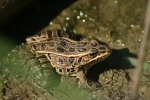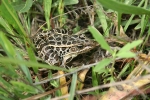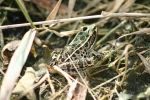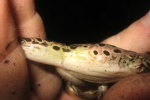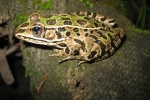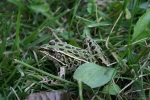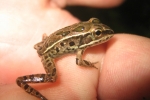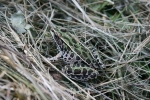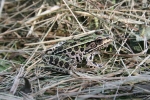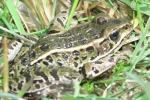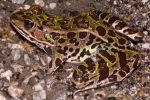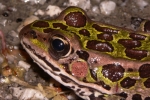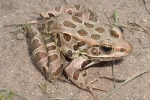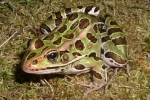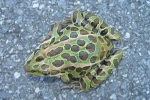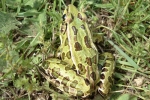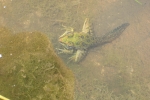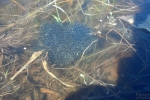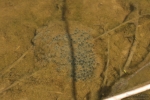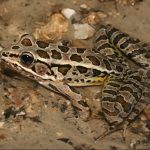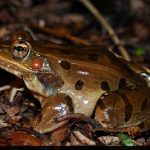Northern Leopard Frog
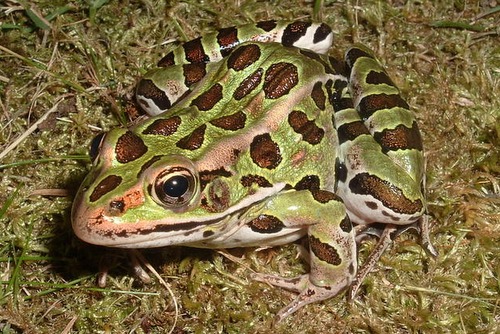
Scientific Name: Lithobates pipiens
Size: 2-5 inches (5-13 cm) in length
Status: Species of special concern
Habitat:
The margin of vegetated ponds, lakes, slow moving rivers, streams, as well as marshy and swampy areas. During mating season it maybe found in less permanent habitats. This species can also be found far from a water source in places like meadows, fields, and woodlands in warmer months.
Description:
Moderate-sized species. The background color varies from bright green to dark greenish brown or brown. The upper and side surfaces of the head, body and appendages have multiple circular spots that are brown or black. The spots are bordered by a thin white or yellow margin. The dorsal spots are rarely in rows, but more often randomly scattered over the back. A light white line extends from the snout to a point just above the shoulder, behind the tympanic membrane. The underside is immaculate white, except the lower jaw may sometimes be dusky. The Northern Leopard frog lacks yellow pigment on the underside of the inner thighs unlike the pickerel frog.
- The dorsal background color varies from bright green to dark greenish brown or brown.
- The dorsal and lateral surfaces of the head. body and appendages have multiple circular spots that are brown or black. The spots are bordered by a thin white or yellow margin. The dorsal spots are rarely in rows, but more often randomly scattered over the back.
- A light white line extends from the snout to a point just above the shoulder, behind the tympanic membrane.
- The ventral surfaces are immaculate white, except the lower jaw may sometimes be dusky.
- Medium-sized species
- The body is moderately slender.
- The head is elongate with a slightly pointed snout.
- The eyes are large and are positioned high on the side of the head.
- The tympanum is smaller than the eye.
- The legs are strong and muscular.
- The toes are pointed and lack webbing.
- The dorsal skin is smooth with some granular ridges.
- The ventral skin is smooth.
- Larger-sized. Average 6-8.5cm
- The dorsum is olive green to brown.
- The ventral is white.
- The tail is lighter in color than the body.
- The tail crest is translucent.
- Both the tail and tail crest are covered with dark spots and lines.


References:
- Hulse, C. and McCoy C. J. and Ellen Censky ,1998. Amphibians and Reptiles of Pennsylvania and the Northeast. 170-174pp.
- Wayne Fidler
- Bob Hamilton
- Don Becker (psychoticnature.com)
Heads up!
Please contribute your observation of this and other herps to the Pennsylvania Amphibian and Reptile Survey. Your help is needed.
